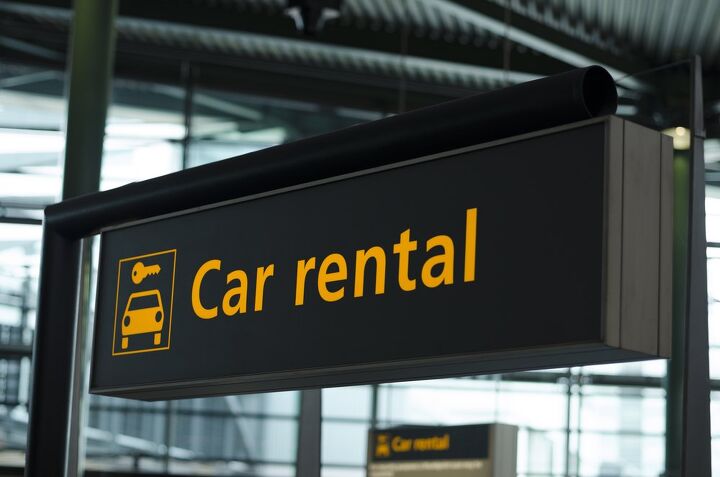Rental Agencies Uncharacteristically Buying Used Cars

With rental companies coming off a particularly lean 2020, fleet downsizing turned out to be a necessity for many agencies. Unfortunately, demand for rental vehicles has begun to return and some markets have found themselves operating with an insufficient number of cars. The upside to this is the ability to charge exorbitant fees for models nobody wanted to rent in the first place. But businesses can’t cash in on vehicles that didn’t get rented, leaving agencies desperate for new product that’s been backlogged by the auto industry’s semiconductor shortage.
The solution is a novel one, at least for rental companies. Rather than gamble the business on whether or not supply chains normalize before summer, they’ve been prowling auctions and hoovering up used cars in record numbers.
Normally, rental agencies buy their fleets in bulk straight from the manufacturer, with second-hand models usually just being there to help address holes in the mix of vehicles offered or strengthen regions that are experiencing unexpectedly high demand. But this year required them to procure cars by any means necessary.
While the semiconductor shortage plays a major role here, the keystone issue is the massive selloff renters engaged in when demand dried up during lockdowns. Most firms sold far more cars than they would have in a normal year, leading to a glut of cheap, low-mileage automobiles that helped surpass secondhand valuations. Now the inverse is becoming true, with the asking price for used cars increasing dramatically. The Manheim Index, which tracks wholesale auction pricing, has them 52 percent higher than they were this time in 2020.
But it’s not bad news for an industry that’s coming off a particularly harrowing financial period. With demand spiking, rental firms can now move just about everything within their fleets at substantially higher prices. The only major downside is that consumers have to pay those wild prices while used vehicle values also go through the ceiling.
“We expect to see records in the Manheim Index through June before demand softens enough to align with supply trends,” Jonathan Smoke, chief economist of Cox Automotive, which owns Manheim, told Bloomberg this week. “We expect retail prices to continue to rise into the summer, as retail trends tend to follow wholesale trends with a six-week lag.”
From Bloomberg:
Avis Budget Group Inc. posted record margins in the Americas during the first three months of the year and grew revenue per day by 12 [percent] to almost $60. The company lost $170 million on a net basis, but made $47 million in adjusted earnings before interest and taxes — its best first quarter performance since 2015. It declined to provide full-year guidance, citing volatility in vehicle supply and other issues.
“The global semiconductor shortage is causing uncertainty in fleet supply and resulting in tighter fleets throughout the industry,” Avis Budget said in a statement. “We have historically navigated through significant vehicle recalls, and believe we have the logistics in place to effectively manage our fleet during this disruption in supply.”
Hertz is adding as many cars to its fleet as it can to support the travel rebound, including used cars, spokeswoman Lauren Luster said in an email.
Don’t expect this to result in rock-bottom pricing on your next rental car, however. Prices are already high just about everywhere and unlikely to go down over the next few months. Rental companies claim they’re just ensuring adding vehicles to serve more customers and estimate vehicles storages will remain a problem in areas where people typically like to vacation. If there’s anything of interest in the state you’re renting, rates of over $100 are likely even if you booked weeks in advance. But we’ve seen fees momentarily eclipsing $500 per day in places like Hawaii and Puerto Rico, suggesting their average rates will be substantially higher.
[Images: IJzendoorn/Shutterstock]

A staunch consumer advocate tracking industry trends and regulation. Before joining TTAC, Matt spent a decade working for marketing and research firms based in NYC. Clients included several of the world’s largest automakers, global tire brands, and aftermarket part suppliers. Dissatisfied with the corporate world and resentful of having to wear suits everyday, he pivoted to writing about cars. Since then, that man has become an ardent supporter of the right-to-repair movement, been interviewed on the auto industry by national radio broadcasts, driven more rental cars than anyone ever should, participated in amateur rallying events, and received the requisite minimum training as sanctioned by the SCCA. Handy with a wrench, Matt grew up surrounded by Detroit auto workers and managed to get a pizza delivery job before he was legally eligible. He later found himself driving box trucks through Manhattan, guaranteeing future sympathy for actual truckers. He continues to conduct research pertaining to the automotive sector as an independent contractor and has since moved back to his native Michigan, closer to where the cars are born. A contrarian, Matt claims to prefer understeer — stating that front and all-wheel drive vehicles cater best to his driving style.
More by Matt Posky
Latest Car Reviews
Read moreLatest Product Reviews
Read moreRecent Comments
- Lou_BC Let me see. Humans are fallible. They can be very greedy. Politicians sell to the highest bidder. What could go wrong?
- SPPPP Vibrant color 9 times out of 10 for me. There may be a few shapes that look just right in metallic gray, for example. There are a few nices ones out there. And I like VW "White Silver". But I'd usually prefer a deep red or a vibrant metallic green. Or a bright blue.
- 28-Cars-Later Say it ain't so, so reboot #6* isn't going to change anything?[list=1][*]V4-6-8 and High "Tech" 4100.[/*][*]Front wheel drive sooooo modern.[/*][*]NOrthSTARt.[/*][*]Catera wooooo.[/*][*]ATS all the things.[/*][*]We're *are* your daddy's Tesla. [/*][/list=1]
- MaintenanceCosts Can I have the hybrid powertrains and packaging of the RAV4 Hybrid or Prime with the interior materials, design, and build quality of the Mazda?
- ToolGuy I have 2 podcasts to listen to before commenting, stop rushing my homework.


































Comments
Join the conversation
I would think this situation would be manna from heaven for Mitsubishi and Fiat. But, maybe they don`t want fleet sales.
I'm in the camp that only magazine editors abuse rental cars. Our JLR dealer uses Enterprise for its loaner cars, and they only give out JLR products. I think its cheaper from a liability standpoint . They probably buy them from them from Enterprise after a year to be used as CPO . Last month mine was a 4 cyl. Velar with NY plates. I suppose they shifted vehicles to places more likely to be rented.